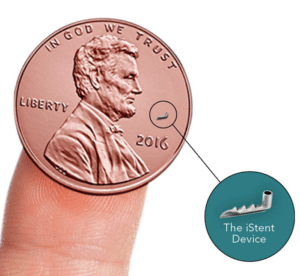About MIGS
MIGS stands for Microincisional Glaucoma Surgery. MIGS surgeries include a group of intraocular procedures that treat mild to moderate glaucoma and are often done at the same time as cataract surgery. The goal of MIGS is to improve and increase the drainage of fluid from inside the eye, which in effect will lower the intraocular pressure. Traditional glaucoma surgeries require making a fairly large incision into the wall of the eye, and although these surgeries are typically effective in reducing the intraocular pressure, they have many possible complications, including infections. MIGS surgeries, on the other hand, utilize microscopic-sized drainage devices and very tiny incisions. MIGS are performed inside the eye, making them far less invasive and better maintain the eye’s integrity. MIGS surgeries are also relatively quick and easy to perform by an experienced glaucoma surgeon. Most people who have MIGS performed show a substantial decrease in their eye pressure and the surgery can reduce or even eliminate their need for eye drops.
MIGS operations can be divided into the following categories:
MIGS may not completely replace the need for drops or traditional glaucoma surgeries, but it does fill a major gap in our treatment paradigm for glaucoma, specifically, treating those who require some form of treatment or medication for glaucoma, but are below the threshold for needing more aggressive surgical treatment. Perhaps the best part is that most of the time, MIGS are generally done at the same time as cataract surgery, so there are no additional trips to the operating room to treat both.

